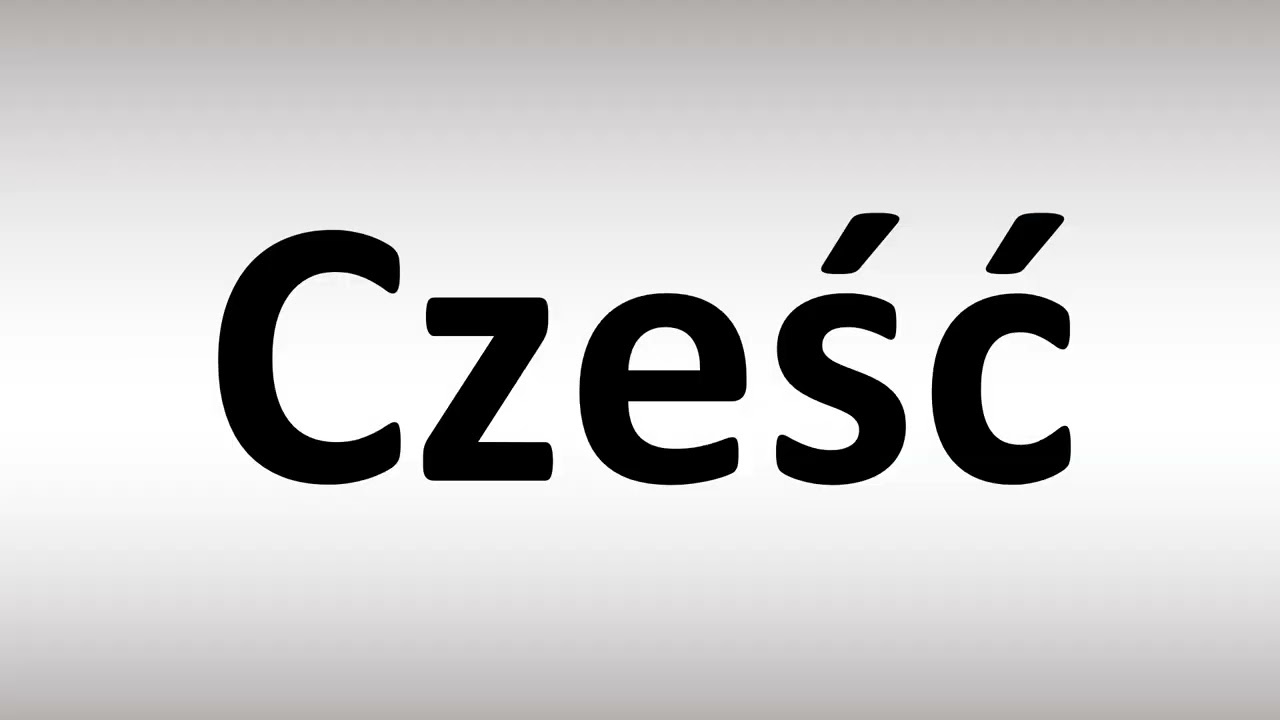Learning a new language opens a door to understanding different cultures and building new connections. One of the most basic and powerful expressions in any language is the greeting. Saying hello can be the first step in starting conversations, establishing relationships, or simply showing politeness and respect. Polish, the official language of Poland, has a variety of greetings that can be used on different occasions, and understanding how to use them appropriately can be quite rewarding and enriching.

Standard Greeting – “Cze”
The most common and versatile greeting in Polish is “Cze”. This informal salutation is perfect for greeting friends, peers, and relatives.
Detailed Steps:
- Begin with eye contact and a smile to convey friendliness.
- Clearly and confidently say “Cheshch” (pronounced as cheh-sh-ch).
- Optionally, accompany the greeting with a handshake, nod, or wave.
Summary
Saying “Cze” is simple, and ideal for casual encounters. It may not be suitable for formal situations or when addressing someone of high esteem.
Formal Greeting – “Dzień dobry”
For formal occasions or when greeting someone in the morning or early afternoon, use “Dzień dobry”.
Detailed Steps:
- Offer a polite smile and make eye contact.
- Pronounce the greeting as “Jen doh-bri” (dzi is pronounced like the j in “juice”).
- Include a formal handshake if appropriate.
Summary
“Dzień dobry” is a respectful greeting for professionals or elders and is best used before the late afternoon. It may seem overly formal among close friends or family.
Evening Greeting – “Dobry wieczór”
This greeting is used during the evening hours, typically after 5 or 6 PM.
Detailed Steps:
- Make eye contact with a warm smile.
- Say “Doh-bri vyeh-choor” with a gentle voice.
- Shake hands in a formal setting, if it seems suitable.
Summary
“Dobry wieczór” is a courteous way to acknowledge the later time of day. It’s mostly used in formal settings or with people you’re not close with.
General Polite Greeting – “Witam”
“Witam” is a formal greeting that can be used any time of day.
Detailed Steps:
- Offer a slight nod with a pleasant facial expression.
- Pronounce it as “Vee-tam”.
- It can be accompanied by a handshake.
Summary
Use “Witam” in situations where you want to convey respect regardless of the time. It’s formal and may be less personal than other greetings.
Casual Greeting Among Young People – “Siema”
“Siema” is a very informal greeting, mostly used by younger people or friends.
Detailed Steps:
- Approach with a relaxed demeanor.
- Say “See-ma” in a friendly tone.
- Often combined with a high-five or fist bump.
Summary
“Siema” signifies a very laid-back, casual encounter. It isn’t suitable in professional or formal settings.
Seasonal Greeting – “Miego dnia”
Wishing someone a good day can also be a form of greeting.
Detailed Steps:
- Smile warmly to express genuine kindness.
- Say “Mee-weh-go dnyah”.
- Use this after another greeting, as a parting phrase.
Summary
“Miego dnia” is a kind gesture, typically used when departing. It might be excessive to use it as an initial greeting.
Greeting for Acquaintances – “Hej”
Similar to “Hi” in English, “Hej” is casual and quick.
Detailed Steps:
- Smile casually and nod.
- Pronounce it just like the English “Hey”.
- Fit for informal, on-the-go encounters.
Summary
“Hej” is for people on familiar terms. It’s not for formal relationships or older individuals you wish to show extra respect.
Greeting for Phone Conversations – “Halo”
When answering the phone, Poles often use “Halo” to start the conversation.
Detailed Steps:
- Answer the phone with a neutral tone.
- Say “Hah-lo” upon answering.
- Await the caller’s response before continuing.
Summary
Using “Halo” on the phone is universally acceptable and expected. Ensure not to use it in face-to-face interactions.
Greeting When Offering Help – “Dzień dobry, w czym mog pomóc?”
If you’re in a position of providing assistance, this greeting is helpful.
Detailed Steps:
- Make eye contact with an open, helpful expression.
- Say “Jen doh-bri, v cheem mog-eh pom-ots?”.
- Ready yourself to listen or assist after greeting.
Summary
This phrase is fundamentally a greeting and an offer of help rolled into one. It sets the tone for a service-oriented interaction.
Respectful Greeting – “Szacunek”
Used among friends to show a sign of deep respect or acknowledgement.
Detailed Steps:
- Approach with a congenial yet respectful attitude.
- Say “Shah-tsoo-nek” with a sincere intonation.
- Can be accompanied by a gesture of appreciation, like a nod.
Summary
While not a typical greeting, “Szacunek” expresses admiration and esteem. It is informal and should be used among friends.
Conclusion
Saying hello in Polish is more than just a word; it’s about making a connection with another person in their native language. Whether it’s a casual “Cze” among friends or a formal “Dzień dobry” to a new professional acquaintance, each greeting serves as a bridge to better understanding and collaboration. With practice, the right tone, and a friendly demeanor, these greetings will become second nature.
FAQs
Q: Is it rude to use an informal greeting in a formal situation?
A: Yes, it can be considered disrespectful. It’s best to use formal greetings in professional or formal situations.
Q: Can I use “Cze” at any time of the day?
A: “Cze” is time-neutral and can be used throughout the day as long as the context is informal.
Q: Are these greetings applicable in all Polish-speaking regions?
A: Yes, these greetings are widely understood in Polish-speaking areas, though regional variations and dialects might influence local greetings.








